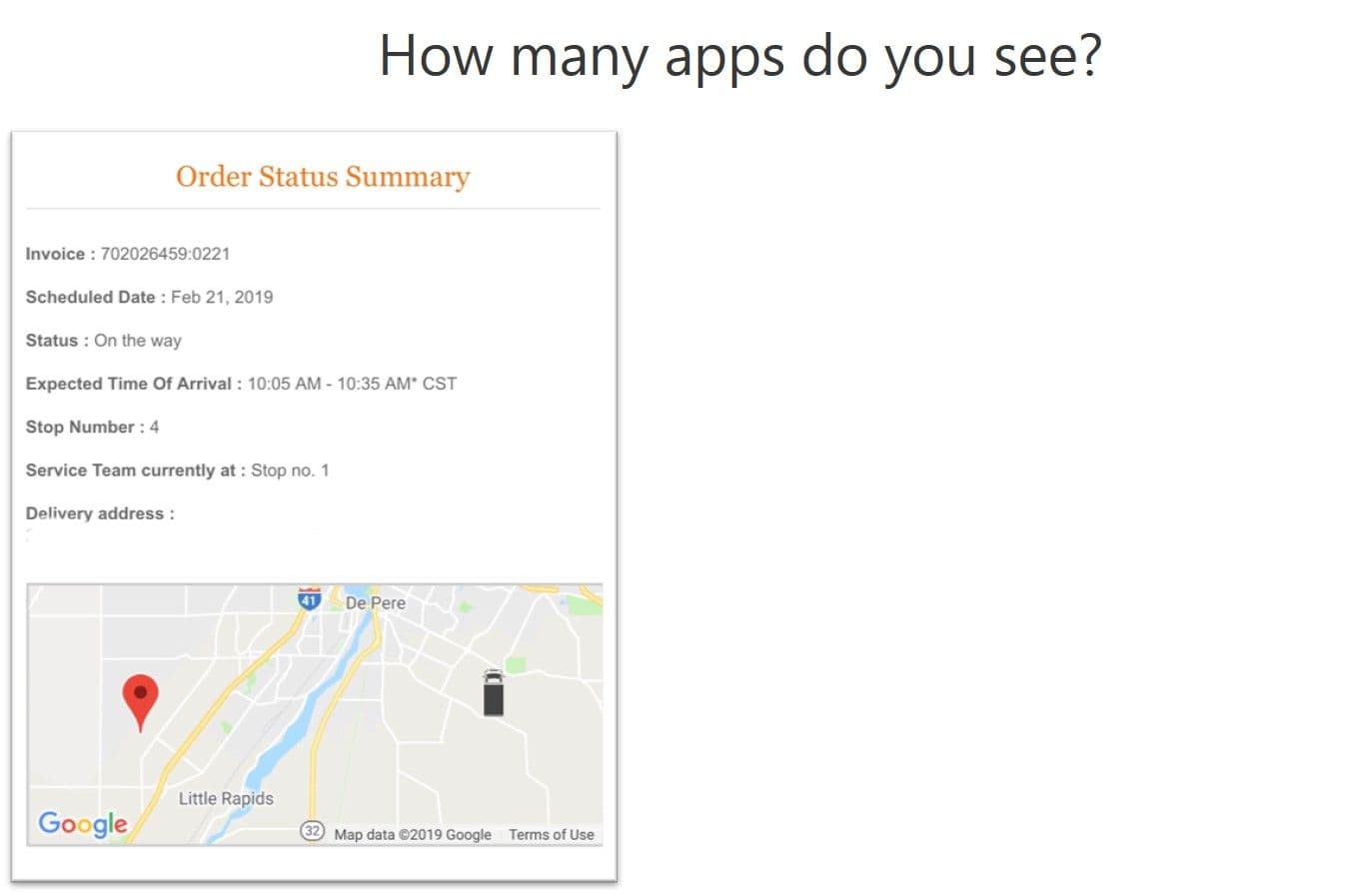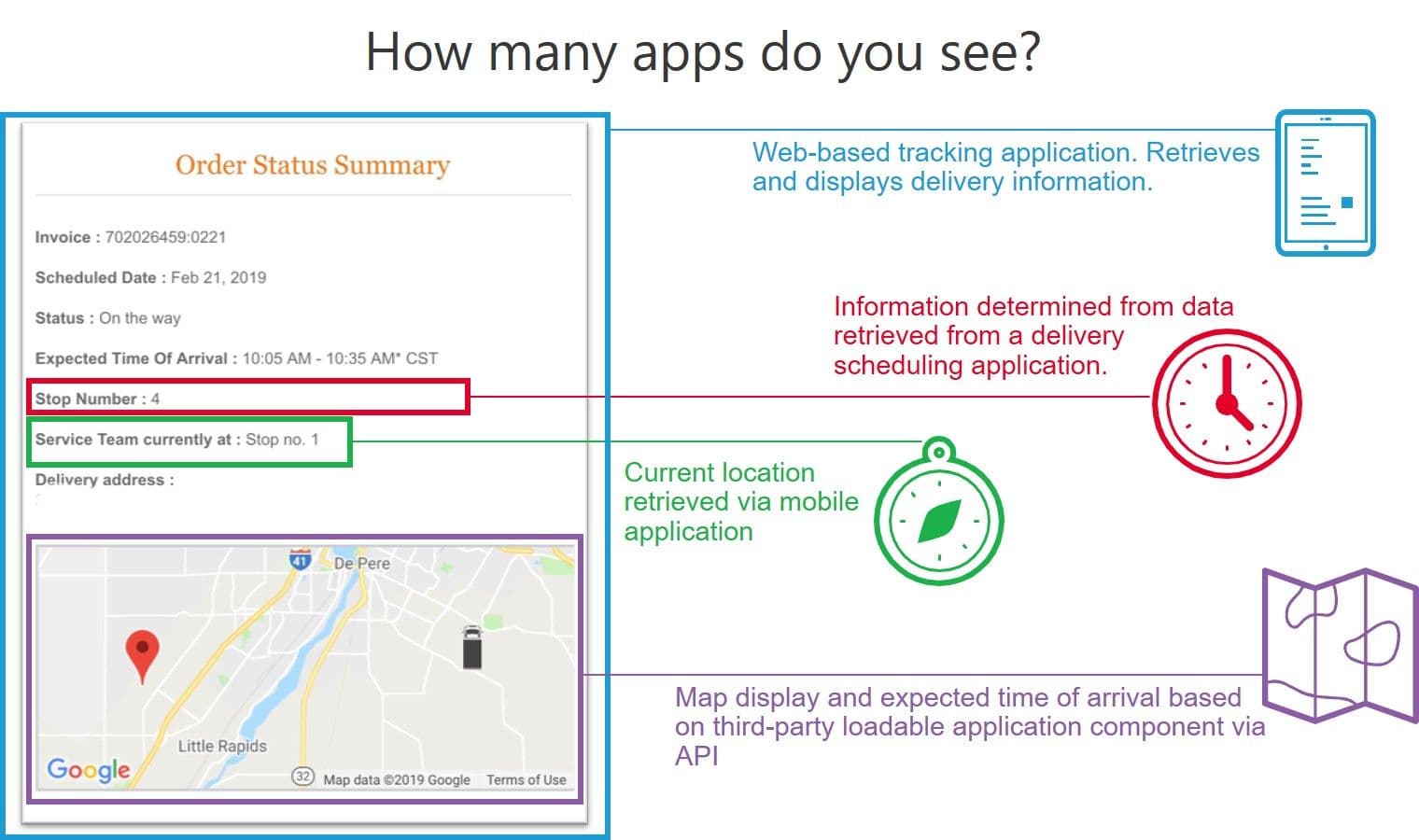The demand for real-time interaction, immediate engagement, and digitally-delivered information is nearly insatiable. Whether it's an entire library of movies and television shows available at our fingertips or the ability to catch a ride, book a table, or find the nearest gas station isn't nearly as important as the fact that every type of organization is under pressure to address customer needs and add value digitally right now.
The result is known more broadly as "digital transformation". The steady migration toward integrated, real-time digital experiences in any and every aspect of our lives. It fuels competitive pressure. Not always advantage, just pressure. The first organization to offer such a digital experience has the advantage of setting the bar for competitors. Others must follow - in short order - or risk being left behind.
The result is an explosion of applications. Mobile applications. Web applications. Integrated applications.
That last part is important, because the concept of a "monolithic" application is well and truly dead. It is a rare thing to find an application that can run completely on its own with no help from external applications. Of the requirements for new tools cited in the Enterprise Application Modernization survey, three of the top five include the word "integrate". Integration with data, integration with on-premises solutions, and integration with existing cloud applications. Integration is necessary because the data consumers want - and need - exists in multiple systems spread across multiple clouds and data centers.
That data is retrieved via an application. Don't fall into the trap of believing that APIs take the place of applications. APIs are an interface. They are a specific style of integration that requires the execution of business logic. They are an interface to an application or system.
Which is why the number of applications in corporate portfolios is exploding as digital transformation takes hold. Unfortunately, most aren’t aware of just how explosive the growth really is. Because in order to deliver the digital experience corporate users and consumers crave, data from many applications must be gathered to present a single, cohesive experience that hides the truth.
Take the Test! How many apps do YOU see?
Consider this simple delivery tracking application. Take a guess at how many apps this simple-looking application actually comprises. Hey - no peeking ahead at the answer.

I would guess that most folks would answer "two". The inclusion of a Google map is a pretty good indicator that the application is using a Google app - accessed via API - to visually indicate the location of the delivery address and delivery vehicle.
But I see at least four - and likely more.
The web application itself is one app. But the information displayed is coming from multiple other applications - including the mobile app used by the delivery drivers to track their day and report location. Having been involved in the purchase scheduled for delivery, I can tell you that the scheduling application is separate from the application used to complete the purchase. Which means scheduling data is coming from a different application.

Generally, when we discuss componentization of applications the discussion for infrastructure providers devolves to microservices and containers. And it is true that the "web application" might actually be multiple, smaller "applications" delivered as microservices inside a containerized environment. It might even be deployed in the public cloud. But there are multiple ways in which applications are decomposing and creating a significant increase in the number applications under management in each and every organization. That includes the use of third-party components - like Google maps - as well as mobile apps.
That includes new web applications that combine all this disparate data into a single display. Because no one has time to jump between three different applications in order to pull this together. This is the digital economy - we expect apps to do the dirty work for us. And organizations will address that expectation by delivering new applications built atop existing - and external - ones.
All this points to the reality that digital transformation is driving growth of application portfolios and changing the way in which they are developed, delivered, integrated, and ultimately even consumed. That subsequently means changes in the way they are secured, scaled, and operated as well.
Which means application delivery has to transform along with it.
About the Author

Related Blog Posts

Multicloud chaos ends at the Equinix Edge with F5 Distributed Cloud CE
Simplify multicloud security with Equinix and F5 Distributed Cloud CE. Centralize your perimeter, reduce costs, and enhance performance with edge-driven WAAP.
At the Intersection of Operational Data and Generative AI
Help your organization understand the impact of generative AI (GenAI) on its operational data practices, and learn how to better align GenAI technology adoption timelines with existing budgets, practices, and cultures.
Using AI for IT Automation Security
Learn how artificial intelligence and machine learning aid in mitigating cybersecurity threats to your IT automation processes.
Most Exciting Tech Trend in 2022: IT/OT Convergence
The line between operation and digital systems continues to blur as homes and businesses increase their reliance on connected devices, accelerating the convergence of IT and OT. While this trend of integration brings excitement, it also presents its own challenges and concerns to be considered.
Adaptive Applications are Data-Driven
There's a big difference between knowing something's wrong and knowing what to do about it. Only after monitoring the right elements can we discern the health of a user experience, deriving from the analysis of those measurements the relationships and patterns that can be inferred. Ultimately, the automation that will give rise to truly adaptive applications is based on measurements and our understanding of them.
Inserting App Services into Shifting App Architectures
Application architectures have evolved several times since the early days of computing, and it is no longer optimal to rely solely on a single, known data path to insert application services. Furthermore, because many of the emerging data paths are not as suitable for a proxy-based platform, we must look to the other potential points of insertion possible to scale and secure modern applications.
